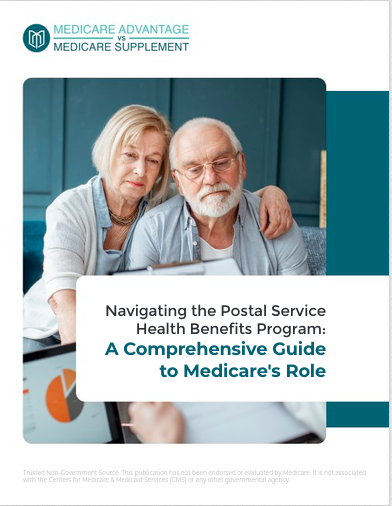Key Takeaways
-
Medicare offers broad coverage, but it’s essential to understand its parts, enrollment timelines, and costs to avoid unexpected penalties or coverage gaps.
-
Supplemental options and coordination with other insurance like employer coverage or Medicaid can significantly impact your healthcare costs and choices.
Understanding Medicare in 2025 Starts With Its Four Core Parts
Before you enroll, it’s critical to understand what each part of Medicare actually covers and how they work together.
Medicare Part A – Hospital Insurance
Part A helps pay for:
-
Inpatient hospital stays
-
Skilled nursing facility care (after a qualifying hospital stay)
-
Hospice care
-
Some home health care
In 2025, most people don’t pay a premium for Part A if they or their spouse paid Medicare taxes for at least 40 quarters. If you haven’t met this threshold, the monthly premium can be as high as $518. The deductible per hospital benefit period is $1,676, and coinsurance kicks in after 60 days of inpatient care.
Medicare Part B – Medical Insurance
Part B covers:
-
Doctor visits
-
Preventive services
-
Outpatient care
-
Durable medical equipment
-
Some home health services
You pay a monthly premium for Part B, which is $185 in 2025 for most individuals, along with a $257 annual deductible. After you meet the deductible, you typically pay 20% of the Medicare-approved amount for services.
Medicare Part C – Medicare Advantage
Medicare Advantage plans are offered by private insurance companies approved by Medicare. These plans must cover everything Original Medicare (Parts A and B) does, and many include additional benefits like vision, dental, and hearing.
However, costs and provider networks vary widely. You must still pay your Part B premium even if you join a Medicare Advantage plan.
Medicare Part D – Prescription Drug Coverage
Part D helps cover the cost of prescription drugs. Each plan has a formulary (a list of covered drugs), which may differ between plans. In 2025, the deductible can be as high as $590. Once your out-of-pocket costs reach $2,000, your plan pays 100% of covered drugs for the rest of the year.
Knowing When to Enroll Makes All the Difference
Medicare enrollment isn’t automatic for everyone. Missing the right window can lead to penalties and delays in coverage.
Your Initial Enrollment Period (IEP)
This seven-month period surrounds your 65th birthday:
-
Begins 3 months before your birthday month
-
Includes your birthday month
-
Ends 3 months after your birthday month
Enrolling during this window ensures you avoid late penalties and coverage gaps.
General Enrollment Period (GEP)
If you miss your IEP, you can sign up between January 1 and March 31 each year. Your coverage will start on July 1, and you may face late penalties.
Special Enrollment Period (SEP)
You may qualify for a SEP if you delay Medicare because you have employer coverage. Once that ends, you get an eight-month window to enroll without a penalty.
Medicare Costs: What You Pay in 2025
Understanding Medicare’s cost structure helps you plan your budget realistically.
-
Part A premium: $0 for most, up to $518/month if not eligible
-
Part A deductible: $1,676 per benefit period
-
Part B premium: $185/month for most
-
Part B deductible: $257 annually
-
Part D deductible: Up to $590
-
Out-of-pocket cap for Part D: $2,000 annually
Medicare does not have a limit on out-of-pocket costs under Original Medicare (Parts A and B). You may want to consider supplemental coverage to help manage those expenses.
Original Medicare vs. Medicare Advantage: Understand the Differences
Original Medicare includes Parts A and B, and you can add a separate Part D plan. Medicare Advantage (Part C) combines A, B, and often D into one plan and may offer extras.
Original Medicare Pros:
-
Flexibility to see any doctor that accepts Medicare
-
Nationwide coverage
-
You can add a Medigap policy for lower out-of-pocket costs
Medicare Advantage Pros:
-
May offer additional benefits like dental, vision, or transportation
-
Out-of-pocket maximums for Part A and B services
-
All-in-one coverage in some cases
Each option has trade-offs. Original Medicare may cost more in premiums but offer more provider flexibility. Medicare Advantage may offer extras but limit your provider network.
The Role of Medigap (Medicare Supplement Insurance)
Medigap plans help cover the “gaps” in Original Medicare like copayments, coinsurance, and deductibles. You must be enrolled in Parts A and B to buy a Medigap policy. These plans are standardized across most states but vary in coverage level.
Important: You cannot have both a Medigap plan and a Medicare Advantage plan.
The best time to enroll in Medigap is during your six-month Medigap Open Enrollment Period, which starts the month you’re both 65 or older and enrolled in Part B. After this window, you could be denied coverage or charged more based on your health.
Employer Coverage and Medicare: What You Should Know
If you’re still working at 65 and have health insurance through your employer (or your spouse’s), you may be able to delay Medicare.
-
If the employer has 20 or more employees, you can delay Part B without penalty.
-
If the employer has fewer than 20 employees, you should enroll in Part A and B as Medicare becomes your primary insurer.
It’s important to coordinate carefully between Medicare and employer coverage to avoid unexpected costs or lapses in coverage.
Medicaid and Medicare Together: Dual eligibility
If your income and resources are limited, you might qualify for both Medicare and Medicaid. This is known as being “dual eligible.” Medicaid can help cover Medicare premiums, deductibles, and other out-of-pocket costs.
There are different Medicaid programs depending on your income level, and being dual eligible often means you get extra help with prescription drug costs under Part D.
Timing Your Retirement and Medicare Enrollment
The age you retire can impact your Medicare decisions. If you retire before age 65, you’ll need separate coverage until you’re eligible for Medicare. If you retire at or after 65, your choices may depend on whether you had employer insurance.
You should start preparing at least 6 to 12 months before your planned retirement date. This gives you time to:
-
Review your coverage options
-
Compare costs
-
Understand how Medicare works with your retirement benefits
What Medicare Doesn’t Cover
Medicare doesn’t cover everything. Here are some common services and items you’ll pay for out-of-pocket unless you have supplemental coverage:
-
Long-term care (custodial care in nursing homes)
-
Most dental care
-
Eye exams for prescription glasses
-
Hearing aids and exams for fitting them
-
Cosmetic surgery
-
Routine foot care
If these services are important to you, look into supplemental coverage options or separate insurance plans.
Annual Enrollment Period and Plan Reviews
Every year, from October 15 to December 7, you can make changes to your Medicare coverage:
-
Switch from Original Medicare to a Medicare Advantage plan
-
Change Medicare Advantage plans
-
Join, drop, or switch a Part D plan
Changes take effect on January 1 of the following year. Reviewing your coverage annually ensures your plan still fits your needs and budget—especially if your medications or health conditions change.
Why Understanding the Basics Is Essential
Medicare isn’t just a single plan—it’s a system with multiple parts, timelines, rules, and exceptions. Making uninformed choices could cost you more in the long run or limit your access to care.
To ensure you choose the right coverage from the beginning, take time to:
-
Learn what each part of Medicare covers
-
Mark your enrollment windows on a calendar
-
Consider how Medicare coordinates with your other insurance
-
Review costs, including premiums and out-of-pocket expenses
-
Reach out for professional help when needed
Talk to Someone Who Can Help You Plan Confidently
You’ve now seen how layered Medicare can be. Enrolling without fully understanding the timelines, costs, and options could leave you with penalties or unexpected bills. But you don’t have to figure it out alone.
Speak with a licensed insurance agent listed on this website to get personalized guidance for your situation. Whether you’re working, retiring soon, or managing health needs, a professional can help you choose coverage that fits your life—not just a checklist.










